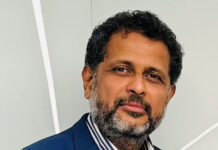Can we expect to see more “greenfield” Neobanks start operations in the region?
Neobanks were introduced to the MENA region relatively late compared to other parts of the world. There are hundreds of neobanks operating around the world, but very few are operating in the region.
In recent years, we have witnessed the launch of neobanks in this region, either by incumbent banks or by institutional and individual investors. Some have shown promising signs of success in a relatively short period. This could encourage others to tap the market in the future. With the current optimism regarding future economic growth in the region, coupled with ambitious “innovation” agendas by key governments and support provided by regulatory authorities, it will not be surprising to see more neobanks being launched in the coming years in the MENA region.
Incumbent banks who lag behind peers in their digital transformation may eventually have to rethink their strategy to be able to maintain their market share – a neobank could be an option. International and regional investors might also see an opportunity to step in as they try to get a slice of the regional banking pie.
How long, on average, will it take Neobanks to reach profitability from their launch date?
Like any other business, several factors come into play in determining how long it will take to reach profitability and, more importantly, how to maintain that profitability. Many of these factors are specific to the business itself, but others are external.
While this region provides many opportunities, the existing banking landscape is very competitive with the presence of several large and well-established players. Neobanks that offer a distinctive value proposition for customers, succeed in delivering the customer experiences they promise, and efficiently reach a considerable volume of operations, will be able to achieve profitability sooner rather than later. A favourable macroeconomic environment is also a key factor. It is crucial for neobanks to have continuous support from a robust shareholder base that understands and appreciates the nature of this business, has a long-term vision and realistic expectations about returns.
What products and services do you predict that Neobanks will be offering in five to ten years from now?
Many neobanks have so far been able to leverage new technologies to offer customers mostly “traditional” products and services, but in a much more efficient way, both in terms of time and cost, by using innovative delivery channels. In the coming years, it is expected that technological innovation will make it possible to offer more tailored products and services which could respond to the needs of specific client segments. It would also allow neobanks to take specific customer profiles into consideration from a risk/pricing perspective.
We also expect the offering of neobanks to expand beyond retail products and services. Some existing technologies will certainly play a greater role in offering services more efficiently to other customer segments, particularly in the commercial banking/SME space. Other products can also be offered in a much more innovative and efficient manner, including those related to transactional banking, particularly trade finance. Some of the current emergent technologies, such as Distributed Ledger Technology and the metaverse, will influence the way financial products and services will be offered in the future.
While the nature and range of products and services offered by neobanks could expand in the future, it is key for both providers, as well as regulators, to maintain an understanding of the nature of any product or service offered and make sure that clients are not exposed to unnecessary or excessive risks.
Does the Middle East need to adopt strategies different to other regions to develop a successful Neobanking ecosystem?
In the last few years many initiatives have been launched by governments, Central Banks, regulatory authorities and other agencies in the region aiming to encourage and support innovation in the financial services industry. With time and experience, strategies adopted will need to be regularly revised and adjusted, taking into account lessons learned and adapting to the unique characteristics of the region.
The UAE has been a pioneer in that respect which has helped to position the country among the top innovation hubs globally. The Dubai International Financial Centre (DIFC) in particular, has become one of the world’s most advanced financial centres, and the leading financial hub for the Middle East, Africa and South Asia (MEASA) region. The DIFC has developed a state-of-the-art, vibrant, ecosystem which fosters innovation. The DIFC Innovation Hub is now the region’s leading innovation ecosystem with more than 500 tech-driven firms operating from the Centre.
On the regulatory front, the Dubai Financial Services Authority (DFSA), the independent financial services regulator for the DIFC, has introduced a number of initiatives, including the Innovation Testing Licence (ITL) Programme which enables ITL holders to test new and innovative financial products, services and business models. The DFSA has also introduced new policy regimes and adapted existing frameworks to accommodate new or evolving business models, including its crypto-tokens regime which is expected to come into force in November 2022. There will always be room for improvements to the ecosystem. Further cooperation and integration within the region will help to promote a business-friendly ecosystem and avoid unnecessary operational burdens.
When will the “Neo” in Neobanks no longer be necessary to distinguish them from the currently more traditional banks?
If technological evolution continues at the same pace seen over the last decade, “neo” banks will become standard within the next decade! The key word is innovation. It is imperative for financial service providers to be innovative in their offerings and to provide customers with better, more efficient, solutions and an enhanced experience. Those who will be successful in doing so will be able to survive and thrive. Those who will fail to adopt a more dynamic and agile approach to their structure, governance, and way of doing business may struggle to maintain market share and might cease to exist.










